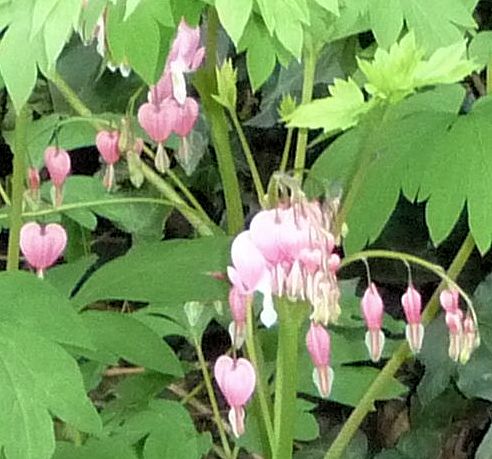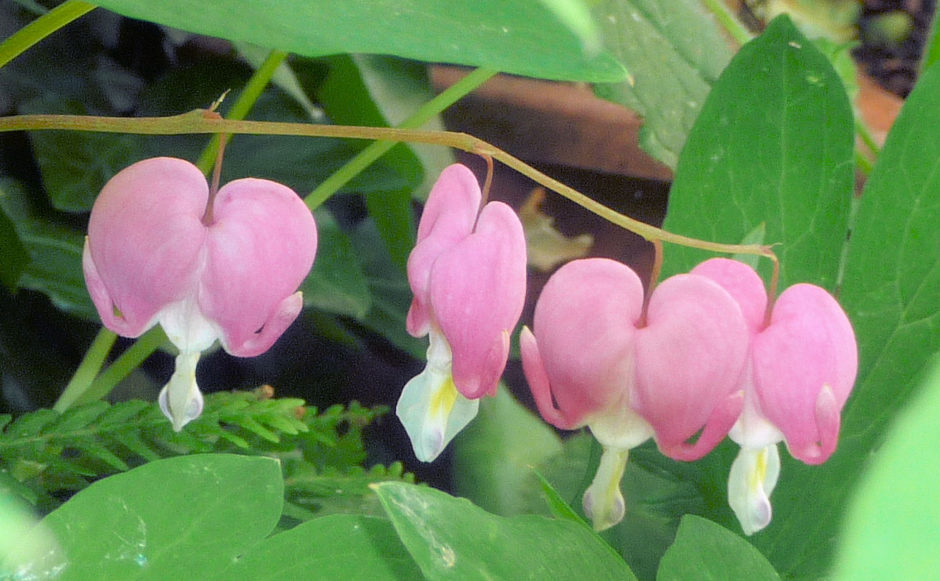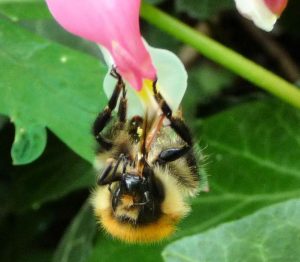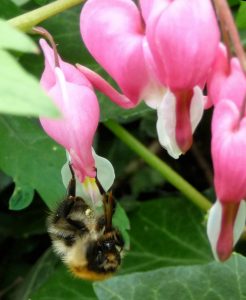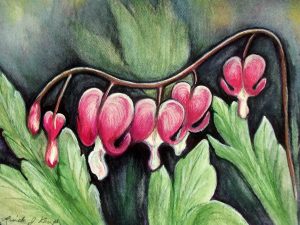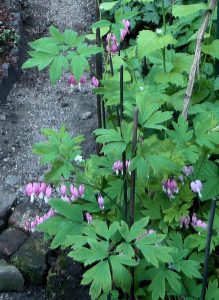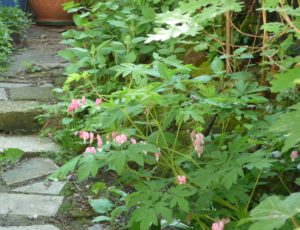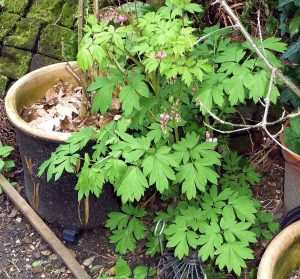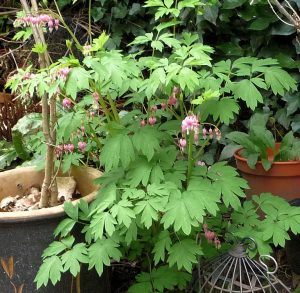BLEEDING HEART (Dicentra spectabilis)
Siberia, China, Korea and Japan
This elegant plant from China likes moist, fertile, well drained soil & shelter from strong winds. A perennial, it does well in sun & part shade, sending up fresh green fernlike foliage from bare earth each spring. It is untroubled by pests or diseases.
From April / May its flowers appear on long arching stems, plump ROSY hearts that dangle 4 to 6 inches above the leaves. These last into early summer. Once they have finished, the foliage lives on, gradually subsiding & disappearing. This leaves a gap in the border until the following spring when Dicentra Spectabilis rises again.
Add plenty of leaf mould before planting, & add a mulch in autumn as well. Roots are brittle and hate disturbance.
Bees Favourite
Dicentra flowers are pollinated by Bumblebees and other insects with long tongues. These images of a Bumblebee visiting the lockets are from 2015.
Dicentra spectabilis was discovered by Scottish botanist and plant hunter Robert Fortune (1812-1880) in 1844.
‘ An intrepid plant hunter risked his life to bring Dicentra back from the Far East and British gardens are all the better for it… He returned unharmed despite fighting off pirates, bandits and enraged mobs, and among the many plants he brought back… such as weigelas, mahonia and winter-flowering honeysuckle, was Dicentra spectabilis ‘
Monty Don for The Daily Mail, 15 May 2015
Legendary
‘The common name, Bleeding Hearts, is said to come from a Japanese legend that tells a story of a young man in love. He tried to win her affection by giving a pair of rabbits (the first two petals of the flower), a pair of slippers (next two petals) and a pair of earrings (remaining two petals). His affection was rejected, and he subsequently took a sword to his heart, causing the bleeding heart.’
May 2021 Gardening Journal, Plant of the Month Lamprocampnis spectabilis Dicentra – Mozilla Firefox
Other names: Asian Bleeding Heart, Chinese Pants, Coeur de Marie (French), Dutchman’s Breeches, Hearts on Strings, Japanese Bleeding Heart, Lady in the Bath, Lady in the Boat, Lady’s Eardrops, Lady’s Heart, Lady’s Locket, Lady’s Purse, Lady’s Shoe, Lockets and Chains, Locks and Keys, Lyre Flower, Our Lady in a Boat, Tearing Hearts.
Bleeding Heart at Highbury
Our first Dicentra, from a small garden centre on Corsica Street, grew in a pot on the balcony of my former flat. It came here in 2001, was planted out, & for years its rosy hearts dangled over the garden path, providing the first spring colour. We lost it one bitter cold winter a few years ago, & replaced it.
2020. No appearance of the Dicentra, which appeared to have been eaten when it raised itself above the cold soil. After about a month its feathery foliage came up, over a foot from the path. This carried on through the growing season as always, but the flowering time had passed & there were no dangling hearts that year. The feathery foliage subsided as always over the summer.
2022. We have had a few winters now where the ferns by the path, as well as the Dicentra, have been eaten by wildlife. Not slugs and snails, but most probably foxes, & rodents.
Roger Brook, The No-Dig Gardener, holds the National Dicentra Collection. See his website for propagation tips & photos, including ‘Valentine’, a rich red Bleeding Heart that is now his favourite.
www.nodiggardener.co.uk/2014/05/my-bleeding-heart.html
